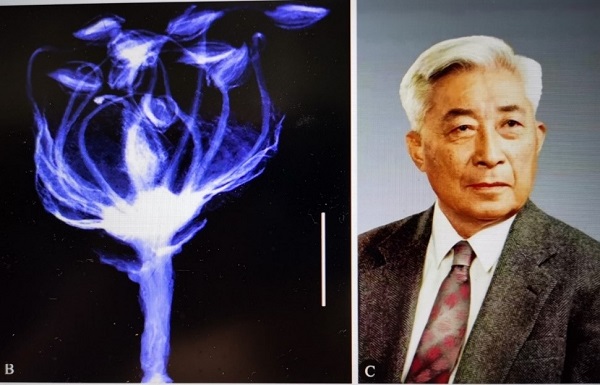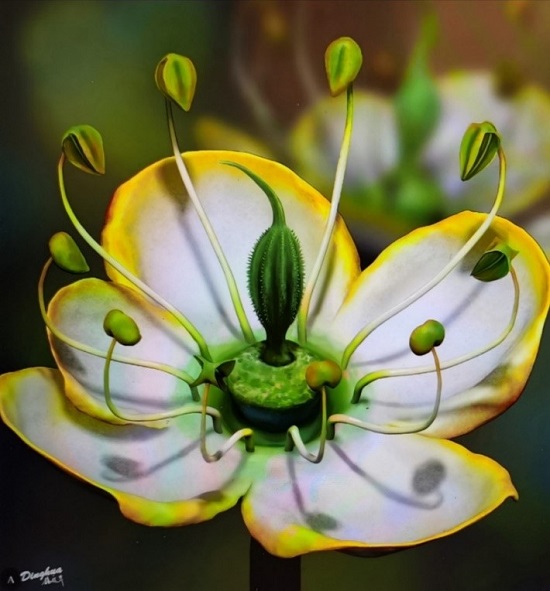Although the Darwinism has deeply rooted in the mind of public, how the flowers evolved has been a puzzle for evolutionary biologists over centuries. Science listed the evolution of flowers a one of the 125 worldwide scientific questions.
There is a long-held hypothesis in botany that a flower is a telescoped shoot. This idea has been cherished by many botanists and supported by various studies of living flowers, but there is no related fossil evidence proving or rejecting this hypothesis. Ignorance of the history of flowers makes people more or less hesitant whenever talking about this hypothesis.
Recently, a paper titled as "A unique flower in Miocene amber sheds new light on the evolution of flowers" was published in a scholarly journal Palaeoentomology. This paper was authored by LIU Xuedie and LIU Zhongjian from the Fujian Agriculture and Forestry University, Diez José Bienvenido from University of Vigo, FAN Yong from Fushun Amber Institute, and WANG Xin from Nanjing Institute of Geology and Palaeontology, Chinese Academy of Sciences (NIGPAS). A flower Dinganthus pentamera embedded in a 15-20 million year-old Dominican amber was documented. Dinganthus was dedicated to the former president of Peking University and leading mathematician, Dr. DING Shisun (1927-2019). The specimen is deposited in the Fushun Amber Institute.
Dinganthus is small, only 3-4 millimeters in dimensions. It is three dimensionally preserved in a piece of amber uncovered from the Miocene stratum. The good preservation and modern observation technology (Micro-CT) allow the key features of the flower to be clearly demonstrated. The flower includes bracts, tepals, stamens, and gynoecium. And this flower has five tepals with recurved fringes and ten curving stamens surrounding gynoecium with a curved style in the center. Each stamen is filamentous, with a tetrasporangiate anther on the top. This flower belongs to the largest group in angiosperms, Eudicots.
Although the history of Eudicots has been pushed back to the mid-Cretaceous (about 100 million years ago) by another flower in amber Lijinganthus, there is no meaningful fossil evidence suggesting how the flowers evolved.
Different from the typical eudicot flowers, which usually have their calyx, corolla, stamens and gynoecium crowded onto the same point of flower axis (receptacle), Dinganthus have these organs spatially distanced along the flower axis, as if these parts were arranged along an axis. Despite its young age, the unique morphology of Dinganthus, using fossil evidence for the first time, tells botanists: a flower could be a condensed shoot, a long-held idea in the past centuries.
This new evidence and its insight will help botanists to decipher the essence of flowers, and also helps palaeobotanists to understand the bizarre-appearing flowers such as Archaefructus and Yuhania.
This research is supported by the Strategic Priority Research Program (B) of Chinese Academy of Sciences and the National Natural Science Foundation of China.
Reference: Xue-Die Liu, José Bienvenido Diez, Yong Fan, Zhong-Jian Liu,Xin Wang, 2020,A unique flower in Miocene amber sheds new light on the evolution of flowers, Palaeoentomology, 3:423-432. https://doi.org/10.11646/palaeoentomology.3.4.15.

Dinganthus and Dr. Shiun Ding (1927-2019). Left, Dinganthus in a MicroCT rendering. Right, the former president of Peking University and leading mathematician, Dr. Shisun Ding.

The three dimensional reconstruction of Dinganthus.
Download:
